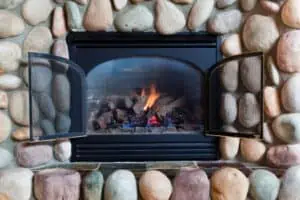How to Turn Off a Gas Fireplace Pilot Light
Gas fireplaces come with a variety of smart features to make them easier and safer to use. Some of them even turn on and off automatically when they are not in use. However, there is one feature that many homeowners find frustrating and challenging: the pilot light.
(Looking for “natural gas fireplace repair“? Contact us Today!)

When you have a gas fireplace, it’s important to know how to safely turn off the pilot light. This will prevent an unexpected and dangerous buildup of gas that could potentially cause a fire.
To do this, you will first need to open the device’s cover and remove it completely. This will give you access to the controls and a shutoff valve, which allows you to safely turn off the gas flow.
Once you have removed the cover, locate the control knob that typically has three settings: “PILOT,” “ON” and “OFF.” You will need to twist the knob until it sits parallel to the gas line. Once you have turned the knob to the “OFF” position, wait at least five minutes before trying again.
Next, you’ll need to remove the fixed glass panel on top of the device. This panel may be made of a glass, metal or wood material. When removing it, be careful to keep the area free of any debris that may damage the unit and cause a gas leak.
You’ll also need to pull out the outer cover of the fireplace for better visibility and accessibility to the controls. You can remove this from the front of the unit or from a side panel.
If your unit is a traditional wall-mounted device, you’ll need to locate the gas valve knob and turn it to “off.” Most units have this button on the top of the valve knob or at the bottom, near the bottom edge of the front screen.
While most people don’t turn off their pilot lights during the spring, summer, and early fall, it is a good idea to do so when possible to avoid unnecessary costs. The most common reason for turning off the pilot light is to save on energy consumption, but this method is not as beneficial as it seems.
In addition to saving you money, leaving the pilot light on can help prevent corrosion inside your pipes and valves. This will help your system last longer and be more efficient.
The pilot flame in a gas fireplace is designed to ignite a thermocouple, which is a small rod that heats up when the flame hits it. When the thermocouple is hot enough, it tells the gas valve to allow the flow of gas to the pilot burner.
If the thermocouple is not heated enough, the gas valve will not send a signal to the pilot burner and it will go out. This is a common problem with gas appliances that have a safety pilot, and it can occur in many different ways.
If you have a traditional fireplace, it is best to follow the manufacturer’s instructions for relighting your pilot light. Alternatively, you can consider having your system serviced by a professional. If you decide to go this route, be sure to consult with a licensed and insured technician before proceeding with any repair or replacement work.

